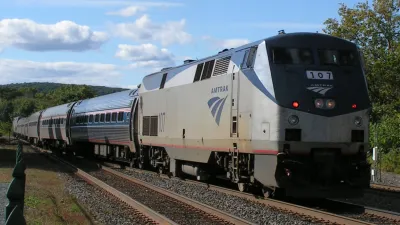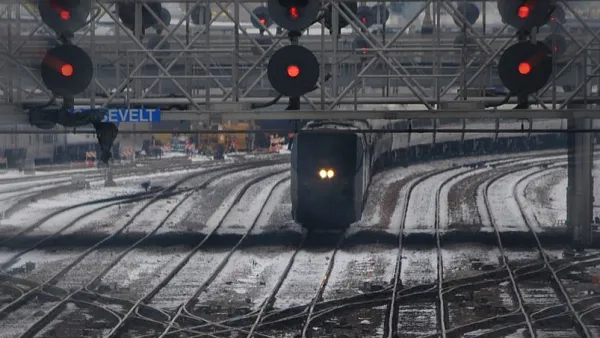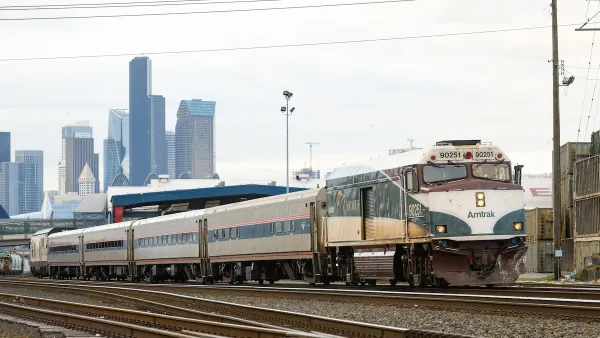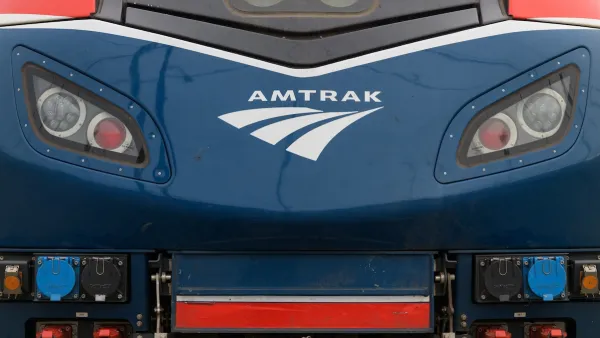States with Amtrak routes less than 750 miles (excludes lines within Northeast Corridor) will need to subsidize the budget shortfalls - the difference between fares and operating costs, or lose the route. States may cut some lines to prop-up others.

Mark Peters writes about the enactment of legislation known as the Passenger Rail Investment and Improvement Act of 2008 (PRIIA) that goes into effect this fall when the 2014 fiscal year beings. The Act requires states to pay the subsidy for shorter routes. Peters takes a closer look at its application in two states - Maine and Pennsylvania.
Maine added service between Portland and Boston a decade ago, recently extending the line farther north to Brunswick. The state supports the service itself, hiring Amtrak to run the trains, while handling marketing and food service on its own, said Patricia Quinn, executive director of the Northern New England Passenger Rail Authority.
She expects the cost shift over the next year will make states become more involved in their train service and look for ways to become more efficient. They also are likely to push Amtrak to become more efficient and could look elsewhere for certain services.
New York's Empire Corridor service, from Penn Station to Albany and Buffalo is one such example. Gov. Andrew Cuomo proposed $44 million to ensure continuation of the service.
RailwayAge's Douglas John Bowen confirms that commitment in his article on Jan. 29.
Allaying fears of cutbacks on Amtrak's Empire Corridor service linking Niagara Falls, Buffalo, Albany, and New York City, New York State says it will maintain existing Amtrak service levels with $44.3 million in state support beginning Oct. 1.
Peters indicates that the funding may prove more of a challenge in Pennsylvania, particularly with lower ridership lines in the western part of the state, including the route from Harrisburg to Pittsburgh. Residents served by that route are organizing to retain the service.
While the state likely will pick up some of the new costs to keep the same service, it will be a challenge to do so for all the routes, said Toby Fauver, deputy secretary for local and area transportation for the Pennsylvania Department of Transportation.
He said, for example, the route between Harrisburg and Pittsburgh is slower than driving and would need considerable updates to become competitive. "It is a struggle for me to want to pay for that service," Mr. Fauver said.
But the state is expected to face pushback from residents of western Pennsylvania. A ridership group held a rally last fall to start drumming up support for the route, which has stops in small towns and cities such as Altoona, Johnstown and Latrobe.
Bowen writes that Vermont and Indiana have yet to determine whether to fund the operating shortfalls for Amtrak routes in their states, and provides contrasting outlooks for rail passengers in these states.
Vermont, which already helps fund the Vermonter and Ethan Allen, is considered likely to continue financing the trains, deemed popular among state residents. By contrast, Indiana seems less likely to aid the Hoosier State, operating between Indianapolis and Chicago; rough estimates by Amtrak of the route's operating cost is between $4 million and $5 million per year.
What is clear will be new attention paid to short-distance Amtrak routes.
"It will force states who haven't paid attention to take a closer look," Ms. Quinn of the Northern New England Passenger Rail Authority said.
[Contributor's note: The link showing "subscriber-only content will be available to non-subscribers for up to seven days after (Jan. 29)"]
FULL STORY: States Weigh Picking Up Train Tab

Analysis: Cybertruck Fatality Rate Far Exceeds That of Ford Pinto
The Tesla Cybertruck was recalled seven times last year.

National Parks Layoffs Will Cause Communities to Lose Billions
Thousands of essential park workers were laid off this week, just before the busy spring break season.

Retro-silient?: America’s First “Eco-burb,” The Woodlands Turns 50
A master-planned community north of Houston offers lessons on green infrastructure and resilient design, but falls short of its founder’s lofty affordability and walkability goals.

Test News Post 1
This is a summary

Analysis: Cybertruck Fatality Rate Far Exceeds That of Ford Pinto
The Tesla Cybertruck was recalled seven times last year.

Test News Headline 46
Test for the image on the front page.
Urban Design for Planners 1: Software Tools
This six-course series explores essential urban design concepts using open source software and equips planners with the tools they need to participate fully in the urban design process.
Planning for Universal Design
Learn the tools for implementing Universal Design in planning regulations.
EMC Planning Group, Inc.
Planetizen
Planetizen
Mpact (formerly Rail~Volution)
Great Falls Development Authority, Inc.
HUDs Office of Policy Development and Research
NYU Wagner Graduate School of Public Service




























